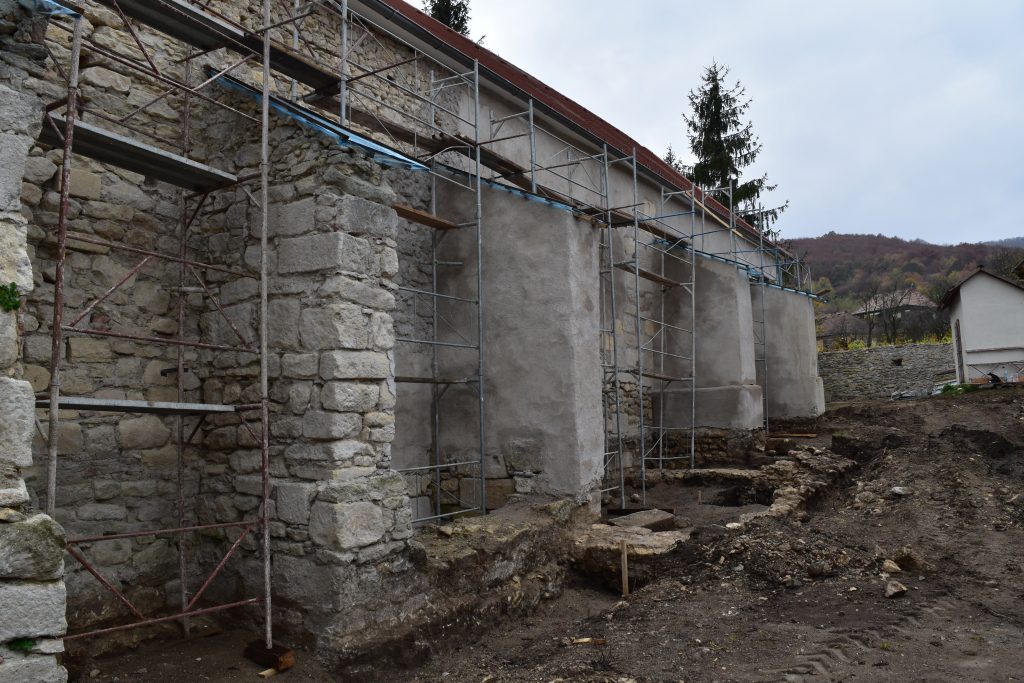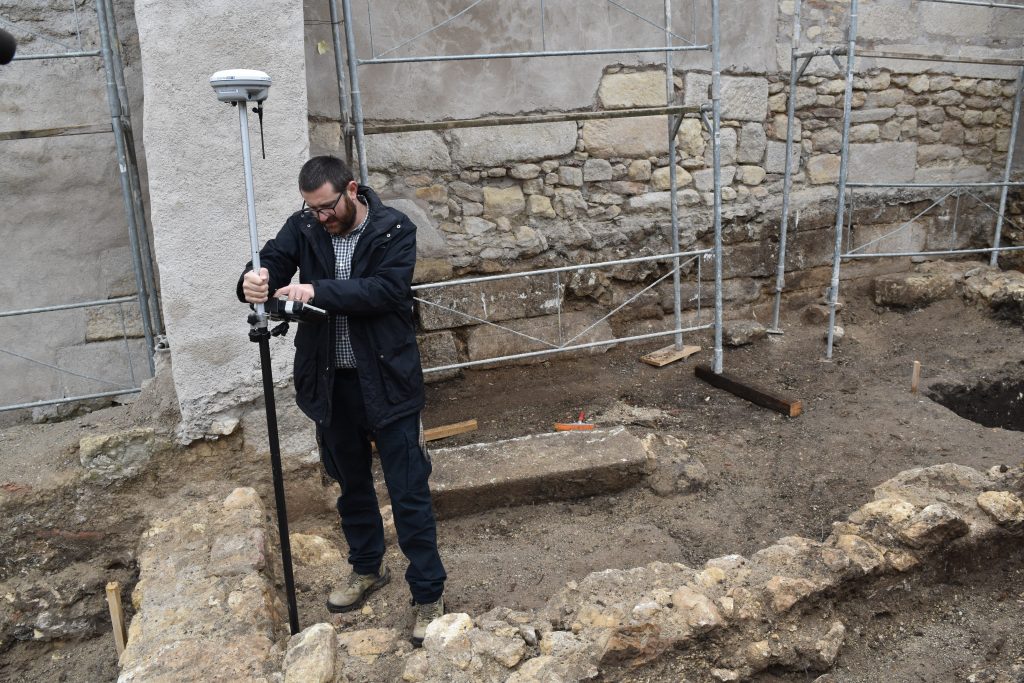Layers of History: the Unitarian church in Várfalva (Moldovenești, Cluj) continues to surprise archaeologists as the restoration works continue.

In 1613 the followers of Ferenc Dávid – Unitarian preacher, writer, and influential theologian promoting religious tolerance – devoted their church in the Transylvanian village of Várfalva to the Unitarian faith. Theirs was the first church in the world to use the word Unitarian, and the building has been in continuous use as a Unitarian church ever since. American Unitarian Universalist pilgrims often come here to gain insights into how Unitarianism is practiced at its origin.
Related: Dávid Ferenc: The forefather of modern religious tolerance
Várfalva is one of the most beautifully positioned villages of the region, nestled among the mountains, 12 km southwest of Torda (Turda), in the valley of the Aranyos (Arieș) river. The oldest record about the ancient castle of the village is from 1075, calling the place Castrum Turda (the old Turda Castle). During the Tatar invasions of Hungary in the 13th Century, most of the area around the castle was ravaged. Later, the land was given to free Szeklers, who moved here from the Szászkézd (Saschiz) region and the territory became part of Aranyos Seat, one of the five Szekler seats.

The church, according to written sources, was built around 1300 in roman style and was remodeled in the Gothic style in 1672.
This spring all-inclusive restoration of the Unitarian church began, and the monument keeps surprising archaeologists at every step of the renewal. TransylvaniaNow met Zsolt Csók, the lead archaeologist of the project on the site, in Várfalva.
“This April we began the restoration works with funding from the European Union, Csók told us. The village is one of the first administrative centers, that was mentioned in written sources in Transylvania in 1075, so we have been very eager to find as much data about the settlement as we can.
During the restoration we have made a series of archeological surveys and we have found inside today’s church, a small, square-shaped apsis, that we can date back to the 14th century. This means that we have another, smaller, but older church inside today’s church. Last week we also identified a few very interesting walls and at first glance we thought, that we had a three-naved basilical plan, that would date the entire church back to the 12th century.
Only after cleaning the walls and seeing all the written sources on the construction phases of the church did we realize that it is actually only a side nave. It is a very common phenomenon in medieval Transylvania, that we have a small church, but the community is expanding, so the church can no longer accommodate them all. They are building other plans right next to the church and link them organically to the original plan. So we have found, that by the end of the 18th century, they were trying to build this side nave. What we found are actually the foundations of this new structure.
So it is not a tri-naved basilical plan after all, but we are happy anyway. During this type of restoration work the most important thing for us is to get the as much information as we can about a building as old and interesting as this one. We also have archeology students working on this site, this is the perfect place for them to see how history unfolds in front of their eyes during a restoration. By the first months of 2020 the church will be completely renovated both in and outside.”